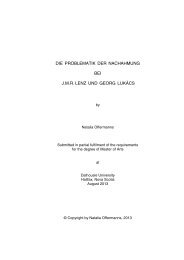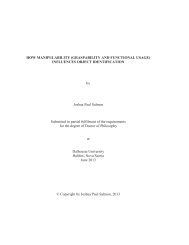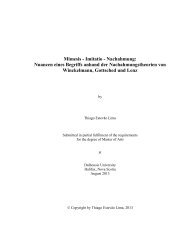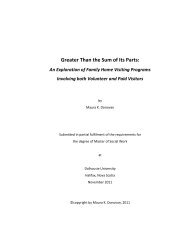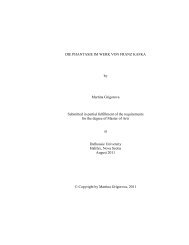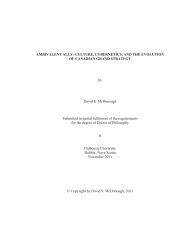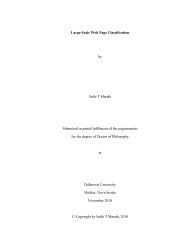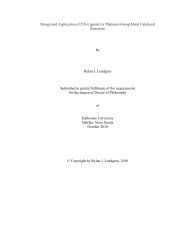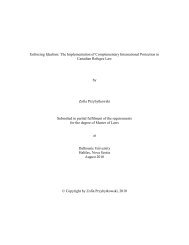ADAPTING TRISTRAM SHANDY by Adria Young Submitted in ...
ADAPTING TRISTRAM SHANDY by Adria Young Submitted in ...
ADAPTING TRISTRAM SHANDY by Adria Young Submitted in ...
Create successful ePaper yourself
Turn your PDF publications into a flip-book with our unique Google optimized e-Paper software.
II. Is the Message<br />
A certa<strong>in</strong> amount of repetition is necessary <strong>in</strong> adaptations. For Bolter and Grus<strong>in</strong>,<br />
all media are <strong>in</strong>termedial and multimodal (55). By <strong>in</strong>termediality, Bolter and Grus<strong>in</strong><br />
mean that <strong>in</strong> every form of media, several other forms and qualities of media are<br />
<strong>in</strong>corporated <strong>in</strong>to the new form, while multimodality accounts for the various ways <strong>in</strong><br />
which the media is constructed and how the story is retold. Rowson’s Tristram Shandy<br />
uses various modes to adapt and recreate the novel, which places his adaptation outside<br />
of typical comic book conventions, and which gives his version its Shandean<br />
‘experimental’ qualities. 64 Indeed, McCloud notes that every medium “beg<strong>in</strong>s its life <strong>by</strong><br />
imitat<strong>in</strong>g its predecessors” (McCloud 151); like Bolter and Grus<strong>in</strong>’s concept, one could<br />
say that all media is adaptation, either of earlier media<br />
forms or particular ideas with<strong>in</strong> media. Rowson<br />
<strong>in</strong>corporates and imitates media forms <strong>in</strong> the graphic<br />
novel to gesture toward this aspect of remediation and the<br />
Shandean method of visual and textual unification.<br />
So, how does Rowson’s adaptation <strong>in</strong>corporate<br />
various media? Comic books are, <strong>by</strong> nature, <strong>in</strong>termedial<br />
and multimodal <strong>in</strong> the use of both text and image to<br />
convey <strong>in</strong>formation. At times, Rowson uses Sterne’s text<br />
to guide the reader’s impression and understand<strong>in</strong>g of the<br />
image “<strong>in</strong>terdependent[ly]” (McCloud 155). At other<br />
times, the text relates directly to the image or panel-scene,<br />
48<br />
Figure 8. Parson Yorick.



